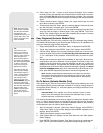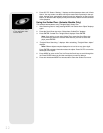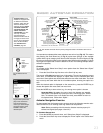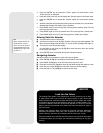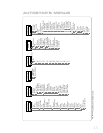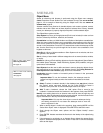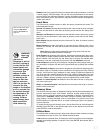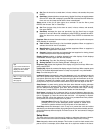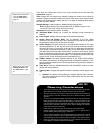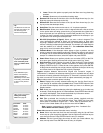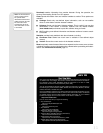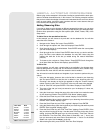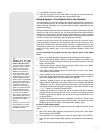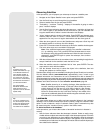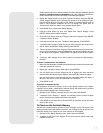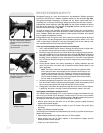
29
Then check the "Select Item: Event" menu for the Sunset time on that date. See
EVENT MENU, page 27.
Time changes the time entered into Autostar. Setting the correct time is critical for
Autostar to properly calculate locations and events. Time may be set to 24-hour mode
(military time) by selecting the "blank" option (
i.e., no option is displayed) which follows
the "AM" and "PM" options
.
Daylight Saving is used to enable or disable Daylight Savings time.
Note: Daylight Savings Time may be referred to by different names in vari-
ous areas of the world. Check local time to verify.
Telescope accesses several options, including:
a Telescope Model: Allows you to select the telescope model connected to
Autostar.
a Focal Length: Displays the focal length of the selected telescope.
a Az/R.A. Ratio and Alt/Dec. Ratio: The Az (Azimuth) or the R.A. (Right
Ascension) ratio and Alt (Altitude) or Dec. (Declination) ratio refers to the gears of
the telescope's motors. Do not alter these numbers.
a Az/R.A.
Percent
:
This option allows you to change the AZ (azimuth) or R.A. (right
ascension) backlash,
i.e., the way the Arrow keys move the telescope along the
azimuth or R.A. axes. If you enter a value near 100, the telescope tube responds
more quickly (it responds immediately at 100%) as you hold down an Arrow key
and also slews (moves) the tube more quickly. If you enter a value near 0, it takes
longer for the tube to respond as you hold down an Arrow key and also slews the
tube more slowly. Experiment with this option. Try changing the percent value until
you get a "feel" for the Arrow keys that is comfortable for you.
a Alt/Dec. Percent: The option operates identical to the Az/R.A. Percent option
(see above), but allows you to change the altitude or declination backlash,
i.e., the
way the telescope responds to the Arrow keys when moving along the altitude or
declination axes.
a Train Drive: Trains the Altitude/Declination and Azimuth/R.A. motors to locate
objects with more precision.
a Tracking Rate: Changes the speed at which the telescope tracks targets in the
sky.
a.
Sidereal: The default tracking setting for Autostar; sidereal rate is the stan-
dard rate at which stars move from East to West across the sky due to the
rotation of the Earth.
LXD75 TIPS
Want to learn more about
using the Date menu?
See the LXD75
TIPS
box,
page 24.
Want to learn more about
Training the Drive? See
the LXD75 TIPS box, page
20.
Observing Considerations
•
T
ry to pick an observing site away from street and house lights and car head-
lights
.
While this is not always possible, the darker the site, the better.
• Give your eyes about ten minutes to adjust to the darkness before observing.
Give your eyes a rest from observing every ten or fifteen minutes to relieve
eyestrain.
•
T
r
y not to use a standard flashlight.
Experienced observers use red LED flash-
lights
, the red utility light on the A
utostar handbo
x, or tape red cellophane o
ver
their flashlights to use f
or setup and map reading so the
y don’t ha
v
e to contin-
ually readjust their e
y
es to the dar
kness
. Be careful not to shine bright lights if
there are other obser
v
ers in the area.
Do not shine a flashlight into the tele
-
scope while someone is obser
ving!
• Dress warmly. It gets chilly when you’re sitting for prolonged periods.
• Practice setting up your equipment during the day or in a lighted area to
become familiar with it before going to a dark site.
•
Use y
our 26mm e
yepiece to view terrestrial objects and wider areas of space,
such as open star clusters
.
Use an optional 9mm e
yepiece when you wish to
vie
w something up close
, such as cr
aters on the Moon or the rings of Saturn.
•
Know your observing site. If you’re going to try out an unfamiliar site, check it out
in the daylight for possible obstructions and pitfalls.



